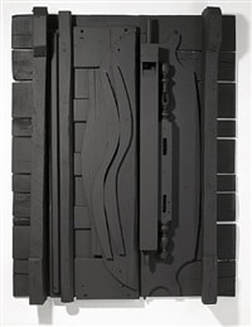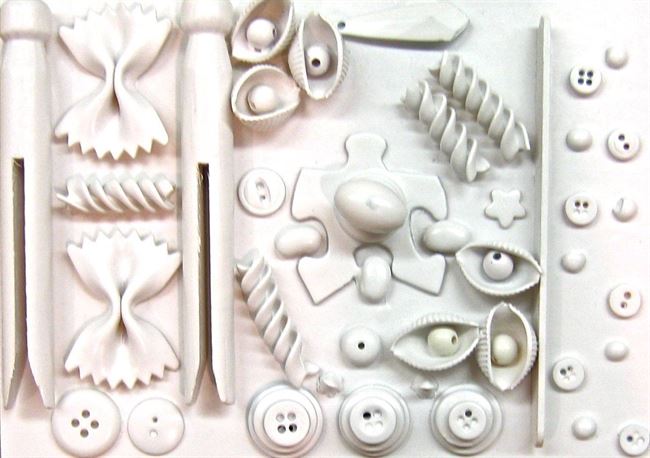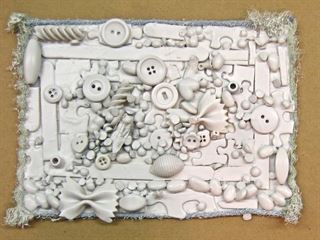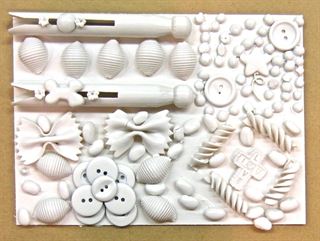|
Louise Nevelson was an American sculptor best known for her monochromatic wooden sculptures. Born on September 23, 1899, in Kiev, Russia, Louise Nevelson studied Cubist art with Hans Hofmann and later at the Art Students League in New York City. Nevelson began to attract attention in the early 1940s, and gained wide fame in the 1950s when museums began buying her work. She is now considered one of America's most innovative sculptors.
During the 1950s, she began to create unique arrangements contained in wooden frames compiled from a range of found objects—usually woodcuts or bits of furniture—that were then painted a uniform black, white, or gold, as seen in her seminal work Royal Tide I(1960). Nevelson died in New York City in 1988. |
Goal and Objectives:The goal of this lesson is to introduce the students to the sculptures of
Louise Nevelson. The Objective is to create a relief sculpture using form, space, texture, and value within their art piece. |
Materials:Mat Board or canvas
A variety of objects, such as beads, buttons, sticks, wooden objects Tacky glue Colored spray paint |
Vocabulary: Form: A three-dimensional element that encloses Volume.
Space: The distance or area between above or around, or within things. Texture: The surface quality of "feel" of an object. Texture can be real or implied. Value: Describes the lightness or darkness of a color. Relief Sculpture: relief sculpture is any work which projects from but which belongs to the wall, or other type of background surface |




